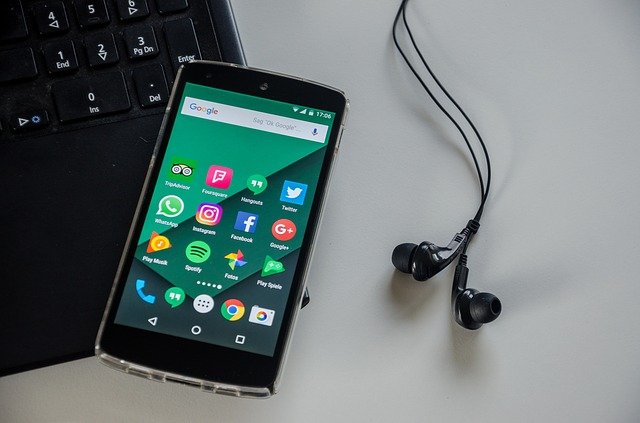It is highly probable that you are not taking advantage of even half of the potential that your Android device has to offer. These small pocket computers, which we call smartphones, have increasingly advanced and powerful hardware that, together with the possibilities offered by an operating system as flexible as Android, can be used for a host of purposes that you might never have imagined.
And it really only takes a little time to get the most out of a mobile phone and discover all its secrets. In this guide, we've compiled some of the most useful advanced tutorials to help you do more than just surf the web, upload photos to Instagram or watch cat videos on YouTube.
Get the most of your Android with these advanced tutorials
Bootloader: what it is and how to unlock it
If you have been immersed in the world of advanced Android for some time, you are probably already familiar with the concepts of locking or unlocking the bootloader. If, on the other hand, you're just getting started with Android, you may not have a clue what this process is all about.
The bootloader in Android is a "component" of the operating system that refers to the part of the software that performs tests to verify that the operating system has not been tampered with in any way, and can boot correctly. Broadly speaking, it can be defined as a kind of guide that helps the operating system to know what steps to follow during its boot process.
Therefore, unlocking the bootloader is a way to bypass certain restrictions usually imposed by the device manufacturer, so that it is possible to manipulate the software, for example by installing a third-party ROM, modifying the system kernel or other ways of modifying the device's operation internally.
The partitions on your mobile phone: what they are and what each one is used for
Like any other operating system, Android divides the device's internal storage into different partitions, each of them oriented to fulfil a different role. /Boot, /system, /recovery, /data, /cache and /misc are the ones that any user of Google's mobile platform who wants to know how their devices work "on the inside" should know about. Broadly speaking, this is how they work:
- /boot: contains everything needed to get the operating system to boot.
- /system: contains the operating system's internal files.
- /recovery: can be defined as an alternative "/boot" partition, to be used if necessary to access certain essential functions.
- /data: contains user data.
- /cache: stores frequently accessed data, to speed up reading by the operating system and apps.
- /misc: contains settings and data related to the telephone operator.
How to update your phone even if there is no official update available
That Android has a serious fragmentation problem is no secret by now. Many smartphones are left unable to upgrade to the latest version of the system, all because their respective manufacturers decide that their hardware is not ready for it. Most of the time, however, this is not the case.
Fortunately, there are ways to manually update any Android device by following a few simple steps, depending on the phone model and its software.
And in the event that a new version is available, but doesn't appear when checking for updates through the system settings, it's always possible to install an OTA file manually, something that will be especially useful for Google Pixel owners.

Image by Pexels from Pixabay
Installing a modified recovery
We have already talked about the different partitions, and we have seen why the recovery partition is one of the most important. This software can also be replaced by installing a modified recovery that allows you to perform various extra functions not found in the original recovery menu.
Rooting your phone
Although there has been a lot of discussion about whether it is worth rooting a phone in the middle of 2019, some people still see clear advantages in obtaining superuser permissions on the phone. Depending on the make and model of your phone, the process for doing so will differ.
How to format or hard reset your phone (and why)
Occasionally, problems arise that require more than a simple reboot. Sometimes it is necessary to start from scratch and format the phone, removing all its data and settings so that the device is as good as new - at least as far as the inside is concerned.
There are several ways to format a phone, the simplest of which is to follow the steps below:
- Open the system settings and go to the "System" category.
- Find the "Recovery options" category and go to "Erase all data".
- Read the instructions, and when it is clear to you, click on the "Reset phone" button.
However, there is also a way to reset the device's settings without having to delete apps and data. If that doesn't work, a slightly more drastic measure is to perform a hard reset, which will delete absolutely all the information stored on the device.
Generally, this process is done to fix performance problems that are not related to the phone's hardware, although it is also a good way to free up storage space. Either way, and although it's not something you'll be doing too often, it never hurts to know the steps to do it.
Is battery calibration really necessary?
There are dozens of myths surrounding our mobile phone batteries, both about energy-saving methods and how to charge our phones correctly. But the need to calibrate the battery from time to time is not one of them.
A study by The Battery University concluded that while our smartphone batteries are smart enough to "communicate" with the operating system, and ultimately with the user through it, there is no guarantee that they will perform optimally throughout their lifetime. And calibration is a process that, sooner or later, will be necessary to bring the system's measurements of battery health back to an accurate level.
The process of calibrating your phone's battery is simple: just drain your smartphone's battery until the "Low Battery" warning appears - according to The Battery University, you don't need to drain the battery until it shuts down - and then fully charge the phone again. It sounds extremely simple - and it is - but there are other factors to take into account and some interesting aspects that we looked at in our article on this topic.
Discover all the components in your phone
Your mobile phone is made up of thousands of different components: screen, processor, memories, sensors... If you've ever been curious to discover everything that your terminal hides in its guts, you can do it through one of the applications to find out what's inside your smartphone, such as CPU-Z, Inware or AIDA64, among others.
Having a Recycle Bin on Android is possible
Unlike other operating systems, Android does not have a native recycle bin where you can send the files you want to delete before getting rid of them for good. However, the freedom and flexibility offered by the operating system to developers has allowed them to create applications to have something similar to a recycle bin in Android. One of the most famous and recommended is Dumpster.
Learn how to remove applications from your system: get rid of bloatware
Manufacturers and their mania for flooding our mobiles with their own applications that we have not asked for, and that we will probably never use. This type of pre-installed software, which adds little or can even be annoying, is known as bloatware, and there are many companies that introduce it on their devices.
Fortunately, there is a way to uninstall applications from the system on Android, and while the process may seem complex at first glance, the truth is that you only need a computer with ADB drivers installed, and memorise a series of commands with which to remove the apps installed by the manufacturer:
- First, enable USB debugging on your phone and connect it to your computer.
- Now, open a command window - CMD or Terminal - on the computer.
- To check that the phone is connected correctly, run the command "adb devices". The device ID number should appear in the command window.
- On the computer, enter the command "adb shell".
- To list all applications pre-installed by the device manufacturer, run the command "pm list packages | grep 'brand' ". For example, pm list packages | grep 'samsung'.
- To remove a specific application, enter the command "pm uninstall -k - -user 0 packagename". For example pm uninstall -k - -user 0 com.samsung.calculator".
- Repeat the above step for all the apps you want to uninstall.
Changing mobile phones? Share your apps via Bluetooth
Although by now you should have created a full backup of your phone that you can restore on any new device you use, you may find yourself in a situation where you want to send a particular app from one phone to another as quickly as possible, and without having to restore a full backup.
The process is very simple, and in fact only involves two steps:
- Extract the APK file of the app you're sending with an app like ML Manager.
- Using the file explorer, send the APK via Bluetooth.
Find out how to uninstall multiple applications at the same time
By default, Android does not offer the possibility to uninstall several applications simultaneously. However, this does not mean that it is not possible to do so. All you have to do is download an app like Easy Uninstaller.
Access all your saved Wi-Fi passwords
And speaking of Wi-Fi, did you know that your phone saves all the passwords of the networks you have connected to? You can see them by following a few simple steps, which will be different depending on whether your phone is rooted or not. If you have superuser permissions, all you need to do is download an app like WiFi Password. Otherwise, the process will require a computer with ADB drivers and the execution of the following instruction in the command window:
adb pull /data/misc/wifi/wpa_supplicant.conf c:/wpa_supplicant.conf
Android is a constantly evolving operating system, and with every major system update, structural and functional changes are introduced, triggering the appearance of new secrets.
These are just a few of the advanced tricks to get the most out of any Android phone, but the list will continue to grow as we discover new ways to exploit the system in one way or another.

